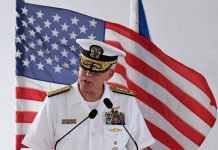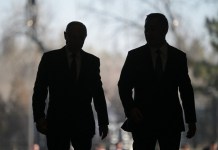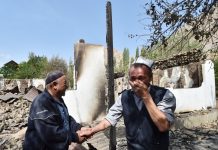In what would be a revolutionary step towards flying economically, future passenger jets could reduce fuel costs up to 10 percent by choosing to fly together in a formation like a flock of birds.

According to an experimental concept by European aerospace giant Airbus, The Fellow’Fly Project, two planes can fly closer together in a way that the air currents generated by one aircraft will benefit the other, helping save fuel consumption.
The concept is based on the ideology of a flock of birds flying together, where some birds take advantage of air generated by other birds in order to fly easily, with less effort.
While it is simpler to see birds fly, it is much more complex to understand how birds fly, with scientists and experts still not being able to understand their flight formations of the avians, which are considered the masters of aerodynamics.
“Birds have been doing this for millions of years, but the disadvantage we have is that we can’t do controlled experiments very easily,” said Dr. Charles Bishop, School of Natural Sciences, Bangor University, UK.
However, with scientists studying the aerodynamic efficiencies of birds flying in formation, the project will mimic the energy savings to the model which will involve flying two large commercial planes in close formation.
The concept will look to capitalize on the Wake Turbulence, which is a disturbance in the atmosphere forming behind an airplane as it travels through air at high speeds, several components of which are Wingtip Vortex and Jetwash.
The Wingtip Vortex, which is not true turbulence at all, is so uniform and predictable that when it lingers in the air for minutes, it can work to pull on the aircraft under a phenomenon called the Vortex Drag. Under the project, planes will be lined up at a distance of a mile close enough to take advantage of vortices generated on each side of the plane ahead.
“They will be 1 1/2 to 2 nautical miles away from the leading aircraft, and slightly offset, which means they are on the side of the vortex. It’s no longer the vortex, it’s the smooth current of rotating air which is next to the vortex, and we use the updraft of this air,” said Bour Schaeffer, an experienced flight-test engineer.
The Fellow’Fly program has been looking to demonstrate and quantify the aerodynamic efficiencies by flight-testing an Airbus A380 mega jet along with an A350-900 wide-body jetliner, while also developing in-flight operational procedures.
The initial stages of flight testing began earlier this year and are set to expand to involve the Frenchbee and SAS airlines, along with air traffic control and air navigation service providers from France, the UK, and Europe, next year.
However, according to Howard Slutsken of CNN, extremely powerful vortices—especially those generated by a large aircraft are known to flip smaller planes that have encountered the horizontal tornado of air streaming behind.
The concept for the program will be ideal if it is implemented correctly and there will be a need to retrain pilots regarding the usage of the phenomenon of Wake Turbulence as they are used to using it differently.
Avoiding wake turbulence is part of a student pilot’s curriculum, as it will be in the fello’fly demonstration. “Pilots are trained to not fly into the vortex of a preceding aircraft,” said Bour Schaeffer, an experienced flight-test engineer.
Via: CNN




